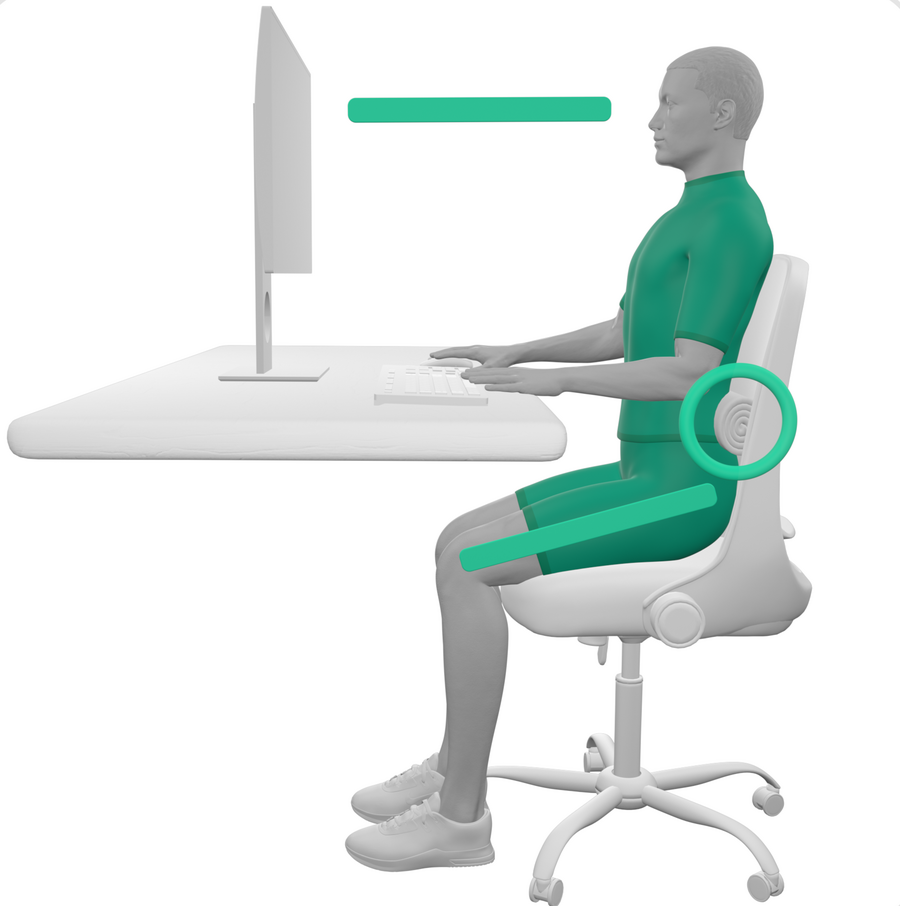
Mobile Apps for Everyone
Exercise Programs for Injury Prevention and Performance.

the desk app
Exercise Programs to improve posture and prevent back, shoulder and neck pain for Desk Workers—COMING SOON.
the back app
Exercise programs for Back Pain prevention—COMING SOON.

the shoulder app

Mauris porta ex id nisl eleifend blandit a eu ex. Praesent nunc massa, lorem sed finibus ac, vehicula eget diam. Sed faucibus feugiat neque eget amet interdum. Nunc at tortor eget purus faucibus tempor. Donec sagittis suscipit porta. Duis mollis orci non erat convallis fringilla. Mauris porta ex sed nisl eleifend magna nisl et magna feugiat neque eget interdum. Nunc at tortor eget purus faucibus tempor. Donec sagittis suscipit porta. Duis mollis orci non erat convallis fringilla sed interdum.Duis mollis orci non erat convallis fringilla. Mauris porta ex id nisl eleifend blandit a eu ex. Praesent nunc massa, pellentesque sed finibus ac, vehicula eget diam. Sed faucibus feugiat neque eget interdum. Nunc at tortor eget purus faucibus sagittis suscipit porta.
the neck app

Mauris porta ex id nisl eleifend blandit a eu ex. Praesent nunc massa, lorem sed finibus ac, vehicula eget diam. Sed faucibus feugiat neque eget amet interdum. Nunc at tortor eget purus faucibus tempor. Donec sagittis suscipit porta. Duis mollis orci non erat convallis fringilla. Mauris porta ex sed nisl eleifend magna nisl et magna feugiat neque eget interdum. Nunc at tortor eget purus faucibus tempor. Donec sagittis suscipit porta. Duis mollis orci non erat convallis fringilla sed interdum.Duis mollis orci non erat convallis fringilla. Mauris porta ex id nisl eleifend blandit a eu ex. Praesent nunc massa, pellentesque sed finibus ac, vehicula eget diam. Sed faucibus feugiat neque eget interdum. Nunc at tortor eget purus faucibus sagittis suscipit porta.
the hip app

Mauris porta ex id nisl eleifend blandit a eu ex. Praesent nunc massa, lorem sed finibus ac, vehicula eget diam. Sed faucibus feugiat neque eget amet interdum. Nunc at tortor eget purus faucibus tempor. Donec sagittis suscipit porta. Duis mollis orci non erat convallis fringilla. Mauris porta ex sed nisl eleifend magna nisl et magna feugiat neque eget interdum. Nunc at tortor eget purus faucibus tempor. Donec sagittis suscipit porta. Duis mollis orci non erat convallis fringilla sed interdum.Duis mollis orci non erat convallis fringilla. Mauris porta ex id nisl eleifend blandit a eu ex. Praesent nunc massa, pellentesque sed finibus ac, vehicula eget diam. Sed faucibus feugiat neque eget interdum. Nunc at tortor eget purus faucibus sagittis suscipit porta.
The Knee App
Account Deletion Page
We’re here to help you manage your account. If you’ve decided to delete your account, please know that this action is permanent and will remove all your data associated with it.To proceed, please fill out the form below with the requested details. Once submitted, your account deletion request will be processed, and we’ll send you a confirmation email.Note: Deleting your account will remove access to all personalized data, services, and saved progress within the app. If you have any questions or if there’s anything we can assist you with, please reach out to our support team at this email address: [email protected]Thank you for using Motion apps.To delete your account please fill out the form below.
The Knee App
Citations and References
1. Sahrmann, S. A. (2002). Diagnosis and treatment of movement impairment syndromes. Elsevier Health Sciences — Shirley Sahrmann provides an in-depth framework for understanding how muscle imbalances lead to movement impairments and pain. She introduces a system for diagnosing movement dysfunctions, focusing on how certain muscle groups may become overactive while others weaken, resulting in altered biomechanics and increased stress on joints. Sahrmann’s approach emphasizes identifying and correcting these imbalances through targeted corrective exercise strategies, which can help restore optimal movement patterns and reduce pain.injury prevention and health.
2. Powers, C. M. (2010). The influence of abnormal hip mechanics on knee injury: A biomechanical perspective. Journal of Orthopaedic & Sports Physical Therapy, 40(2), 42-51. Summary: This study explores how abnormal hip mechanics, such as weak hip abductors and external rotators, can lead to increased stress on the knee joint, contributing to injuries like patellofemoral pain syndrome. The findings suggest that addressing hip muscle imbalances is crucial in preventing and treating knee injuries.
3. Dierks, T. A., Manal, K. T., Hamill, J., & Davis, I. (2008). Proximal and distal influences on hip and knee kinematics in runners with patellofemoral pain during a prolonged run. Journal of Orthopaedic & Sports Physical Therapy, 38(8), 448-456. Summary: This study examines how muscle fatigue affects hip and knee kinematics in runners with patellofemoral pain. The results indicate that muscle fatigue leads to altered movement patterns, increasing stress on the knee joint and exacerbating pain.
4. Friel, K., McLean, N., Myers, C., & Caceres, M. (2006). Ipsilateral hip abductor weakness after inversion ankle sprain. Journal of Athletic Training, 41(1), 74-78. Summary: This research investigates the relationship between ankle sprains and hip muscle strength, finding that individuals with a history of ankle sprains often exhibit hip abductor weakness, which can contribute to knee pain due to altered biomechanics.
5. Hewett, T. E., Myer, G. D., & Ford, K. R. (2005). Reducing knee and anterior cruciate ligament injuries among female athletes: A systematic review of neuromuscular training interventions. The Journal of Knee Surgery, 18(1), 82-88. Summary: This systematic review evaluates neuromuscular training programs aimed at reducing knee injuries, particularly ACL injuries, in female athletes. The findings suggest that addressing muscle imbalances and improving neuromuscular control can significantly reduce the risk of knee injuries.
6. Crone, C. (1993). Reciprocal inhibition in man. Danish Medical Bulletin, 40(5), 571-581. Summary: Crone investigates the mechanism of reciprocal inhibition in humans—a process where the contraction of one muscle leads to the relaxation of its opposing (antagonist) muscle. This reflexive action is essential for smooth, coordinated movements and is controlled by the nervous system. Crone examines how reciprocal inhibition functions during voluntary movements, as well as its role in reflex actions. The study emphasizes that reciprocal inhibition is critical for motor control, as it helps prevent opposing muscles from interfering with intended movements. Disruptions in this mechanism can lead to movement inefficiencies and may contribute to various neuromuscular disorders. The research highlights the importance of reciprocal inhibition in maintaining effective and efficient movement patterns in daily activities and athletic performance.This article is not publicly available online, but it can typically be accessed through medical libraries or academic institutions.
7. Witvrouw, E., Lysens, R., Bellemans, J., Cambier, D., & Vanderstraeten, G. (2000). Intrinsic risk factors for the development of anterior knee pain in an athletic population: A two-year prospective study. The American Journal of Sports Medicine, 28(4), 480-489. Summary: This prospective study identifies intrinsic risk factors, including muscle tightness and strength imbalances, that predispose athletes to anterior knee pain. The research highlights the importance of muscle balance in preventing knee pain among athletes.
8. Tenan, M. S., & Morelli, K. M. (2022). The influence of gluteal muscle strength deficits on dynamic knee valgus: A scoping review. Journal of Experimental Orthopaedics, 9(1), Article 51. Summary: This study examines how deficits in gluteal muscle strength, particularly in the gluteus medius and gluteus maximus, influence dynamic knee valgus—a movement pattern where the knee collapses inward. This misalignment, often observed during activities like running and jumping, increases stress on the knee joint and can heighten the risk of knee injuries, including ACL tears and patellofemoral pain syndrome. The authors reviewed existing research linking gluteal weakness to dynamic knee valgus and found that inadequate strength in these muscles often leads to altered lower limb biomechanics. The review underscores the importance of gluteal strengthening exercises to improve knee stability and reduce injury risk, particularly in athletic and physically active populations. The findings support including gluteal-focused strengthening in preventative and rehabilitative programs for knee health.
9. Bliss, T. V. P., & Lomo, T. (1973). Long-lasting potentiation of synaptic transmission in the dentate area of the anaesthetized rabbit following stimulation of the perforant path. The Journal of Physiology, 232(2), 331–356. Summary: Speaks to a principle found in the neuromuscular system known as long-term potentiation (LTP). In this process, repeated activation of specific neural pathways reduces resistance and increases the efficiency of signal transmission across synapses. This concept, foundational to learning and motor control, indicates that when a movement or action is practiced repeatedly, the communication between the nerves and muscles involved becomes stronger and more efficient.A key study by Bliss and Lomo (1973) demonstrated this effect in neural pathways, showing that repetitive stimulation could lead to lasting improvements in synaptic strength. In the context of human movement, this principle is essential for skill acquisition and motor learning. Repeated practice of a movement enhances the neural connections involved, allowing the body to perform the action more smoothly, quickly, and with less conscious effort over time. This understanding is valuable in areas like physical rehabilitation, athletic training, and motor learning, where structured repetition is used to build efficient, reliable movement patterns and optimize neuromuscular coordination.
10. Roig, M., O’Brien, K., Kirk, G., Murray, R., McKinnon, P., Shadgan, B., & Reid, W. D. (2009). The effects of eccentric versus concentric resistance training on muscle strength and mass in healthy adults: A systematic review with meta-analysis. British Journal of Sports Medicine, 43(8), 556-568. Summary: This meta-analysis compares eccentric and concentric resistance training, concluding that eccentric exercises are superior for increasing muscle strength and hypertrophy. The findings suggest that emphasizing eccentric contractions in resistance training can lead to greater gains in both strength and muscle size, making it highly effective for strength-building programs
11. LaStayo, P. C., Ewy, G. A., Pierotti, D. D., Johns, R. K., & Lindstedt, S. L. (2003). Summary: The positive effects of negative work: Increased muscle strength and decreased fall risk in a frail elderly population. The Journals of Gerontology Series A: Biological Sciences and Medical Sciences, 58(5), M419-M424. Summary: This study explores the benefits of eccentric exercise in improving functional performance in older adults, showing that eccentric training leads to increased strength and reduced fall risk. The findings underscore the importance of eccentric movements in enhancing balance, mobility, and overall physical function in populations that benefit from lower-intensity training.
12. Cheatham, S. W., & Stull, K. R. (2018). Comparison of three different density type foam rollers on knee range of motion and pressure pain threshold: A randomized controlled trial. International Journal of Sports Physical Therapy, 13(3), 474-481. This study evaluated the effects of foam rollers with varying densities (soft, medium, and hard) on knee range of motion (ROM) and pressure pain threshold (PPT). The findings revealed that all three densities produced significant improvements in both ROM and PPT, with no statistically significant differences between the densities. This suggests that foam roller density does not impact the effectiveness of the technique. Instead, individual preferences and comfort may play a more critical role in encouraging consistent use. These results highlight the importance of choosing a foam roller based on personal comfort rather than focusing solely on density.
12. Cheatham, S. W., & Stull, K. R. (2018). Comparison of three different density type foam rollers on knee range of motion and pressure pain threshold: A randomized controlled trial. International Journal of Sports Physical Therapy, 13(3), 474-481. This study evaluated the effects of foam rollers with varying densities (soft, medium, and hard) on knee range of motion (ROM) and pressure pain threshold (PPT). The findings revealed that all three densities produced significant improvements in both ROM and PPT, with no statistically significant differences between the densities. This suggests that foam roller density does not impact the effectiveness of the technique. Instead, individual preferences and comfort may play a more critical role in encouraging consistent use. These results highlight the importance of choosing a foam roller based on personal comfort rather than focusing solely on density.
The Knee App
Philosophy | Methodology
Motion, as a company, and by extension The Knee App, is built on 8 Principles of Movement Optimization and Injury Prevention. These principles are rooted in fundamental concepts of biomechanics, movement science, neuromuscular function, and corrective exercise, all aimed at promoting efficient movement patterns, reducing compensatory movements, and minimizing the risk of injury. Every exercise and exercise program developed at Motion is thoughtfully designed to reflect and uphold these principles.
1. Synergistic Dominance: When primary muscles fail to perform effectively, secondary or helper muscles take over, which can lead to compensations, imbalances, and overuse injuries. For example, weak gluteal muscles may lead to compensatory activation in the hamstrings and lower back muscles.2. Length-Tension Relationship: Muscles have an optimal length at which they can generate the most force. If a muscle is too shortened or too lengthened, its ability to produce force decreases, leading to inefficient movement and increased risk of injury.3. Altered Reciprocal Inhibition: This occurs when an overactive or tight muscle inhibits its opposing muscle. For example, a tight hip flexor can inhibit the gluteal muscles, leading to altered movement patterns and potential dysfunction.4. Dynamic Stabilization: This refers to the ability of stabilizing muscles to control a joint’s position during movement. Strong stabilizers, particularly in the core and around major joints, help maintain alignment and prevent injury by controlling movements in multiple planes.5. Arthrokinematic Dysfunction: Joint motion can become impaired when surrounding muscles are imbalanced or improperly activated. This dysfunctional motion at the joint level can increase strain and discomfort, especially under repetitive movements or load.6. Cumulative Injury Cycle: This cycle describes how repetitive strain on a muscle or joint can lead to inflammation, muscle spasms, scar tissue, and ultimately impaired movement patterns. Breaking this cycle early is essential to prevent further injury or chronic dysfunction.7. Neuromuscular Efficiency: Neuromuscular efficiency is the ability of the nervous system to recruit the right muscles at the right time to perform a movement. Efficient recruitment allows for smooth, controlled, and coordinated movements while minimizing strain.8. Motor Control and Motor Learning: Motor control is the body’s ability to regulate and coordinate movement patterns, while motor learning is the process of refining these movements over time through practice. Consistent repetition of correct movements helps reinforce efficient patterns and reduce compensations.
Mobile Apps for Everyone
Privacy Policy
Effective Date: October 24, 2024Motion ("we," "us," or "our") is committed to protecting the privacy of our users ("you" or "your").This Privacy Policy explains what information we collect, how we use it, and how we protect it when you use our mobile application (the "App").Information We Collect. We collect two types of information through the App:Personal Information: This is information that can be used to identify you directly, such as your name, email address, and any other information you choose to provide us.Non-Personal Information:This is information that does not identify you directly, such as your device type, operating system, usage data (e.g., features used, frequency of use), and anonymized data about your exercise routines.How We Collect Information. We collect information through the following methods:Information you provide: You may provide us with personal information when you create an account, contact us for support, or participate in other activities within the App.Automatic collection: We may collect non-personal information automatically when you use the App. This information is collected using cookies and other tracking technologies.How We Use Information. We use the information we collect to:Provide and improve the App and its features. Personalize your experience with the App. Send you informational emails (with your consent). Respond to your inquiries and requests.Analyze how the App is used. Comply with legal and regulatory requirements.Sharing Your Information. We will not share your personal information with third parties without your consent, except in the following cases:To service providers who help us operate the App. To comply with legal or regulatory requirements. In the event of a merger, acquisition, or other business transaction.Data Security :We take reasonable steps to protect your information from unauthorized access, disclosure, alteration, or destruction.However, no internet transmission or electronic storage method is completely secure.Your Choices: You have choices regarding your information:You can choose not to provide any personal information when you use the App. You can opt out of receiving marketing emails from us by following the unsubscribe instructions in the emails. You can access and update your personal information through the App settings.Children's Privacy:The App is not directed to children under the age of 13. We do not knowingly collect personal information from children under 13. If you are a parent or guardian and you believe your child has provided us with personal information, please contact us: [email protected].Changes to this Privacy Policy:We may update this Privacy Policy from time to time by updating the Privacy Policy in the App.Contact Us:If you have any questions about this Privacy Policy, please contact us at:[email protected]This Privacy Policy is incorporated by reference into the Terms and Conditions of the App.Thank you for using Motion!
Mobile Apps for Everyone
Terms and Conditions
Last Updated: 12-7-24Welcome to Motion! These Terms and Conditions ("Terms") govern your use of the Motion mobile application ("App") which provides exercise programs for injury prevention, flexibility, and strength. By downloading or using the App, you agree to comply with and be bound by these Terms. Please read them carefully.1. Acceptance of TermsBy accessing and using the App, you accept and agree to be bound by these Terms and our Privacy Policy. If you do not agree to these Terms, do not use the App.2. Changes to TermsMotion reserves the right to modify these Terms at any time. Any changes will be effective immediately upon posting the revised Terms in the App. Your continued use of the App after any changes indicates your acceptance of the new Terms.3. Use of the AppThe App is intended for personal use only. You agree to use the App in compliance with all applicable laws and not for any unlawful purpose.4. Health DisclaimerImportant: Consult Your Healthcare ProfessionalThe information provided in the App is for educational purposes only and is not a substitute for professional medical advice, diagnosis, or treatment.Always seek the advice of your physician or other qualified health provider with any questions you may have regarding a medical condition before starting any exercise program.If you experience any pain or difficulty with any exercises, stop immediately and consult your healthcare provider.5. Limitation of LiabilityMotion is not responsible or liable for any injury, loss, or damage incurred as a result of using the App or performing the exercises provided.Use of the App is at your own risk. Motion makes no representations or warranties of any kind, express or implied, as to the operation of the App or the information, content, or materials included in the App.6. User ResponsibilitiesYou are responsible for providing accurate and up-to-date information about your health and fitness levels.You agree to use the App only for lawful purposes and in a manner that does not infringe the rights of, or restrict or inhibit the use and enjoyment of the App by any third party.7. Intellectual PropertyAll content, features, and functionality of the App, including but not limited to text, graphics, logos, and software, are the exclusive property of Motion or its licensors and are protected by copyright, trademark, and other intellectual property laws.You may not copy, modify, distribute, sell, or lease any part of the App or its contents without prior written consent from Motion.8. TerminationMotion reserves the right to terminate or suspend your access to the App, without notice, for conduct that Motion believes violates these Terms or is harmful to other users of the App, Motion, or third parties, or for any other reason at Motion's sole discretion.9. Governing LawThese Terms are governed by and construed in accordance with the laws of [Your Country/State], without regard to its conflict of law principles. You agree to submit to the exclusive jurisdiction of the courts located in Boise, Idaho for the resolution of any disputes arising out of or relating to these Terms or the App.10. Contact InformationIf you have any questions or concerns about these Terms or the App, please contact us at:Motion
3353 S Old Hickory Way
Boise, ID, 83716
[email protected]By using the Motion mobile application, you acknowledge that you have read, understood, and agree to be bound by these Terms and Conditions.Thank you for using Motion!








